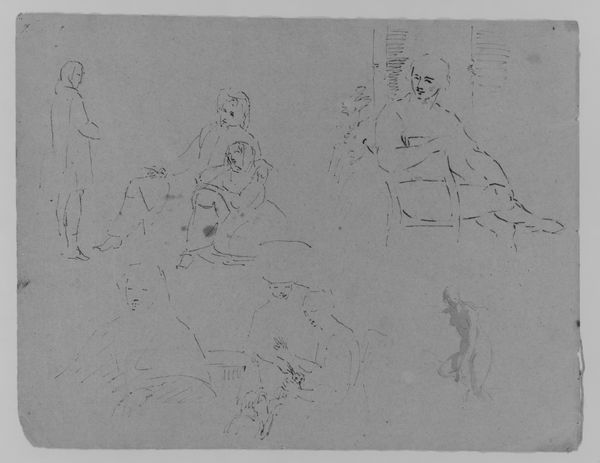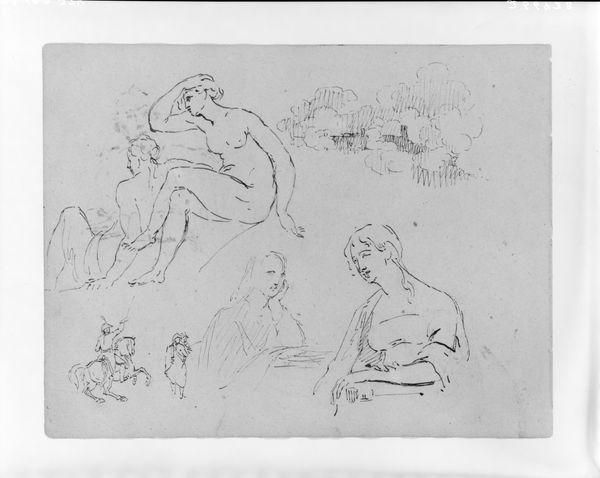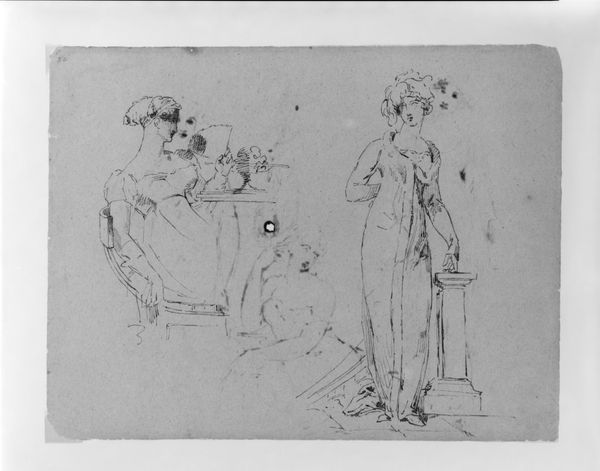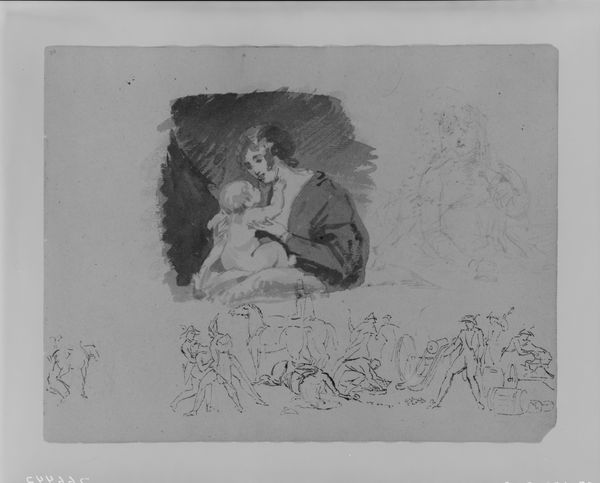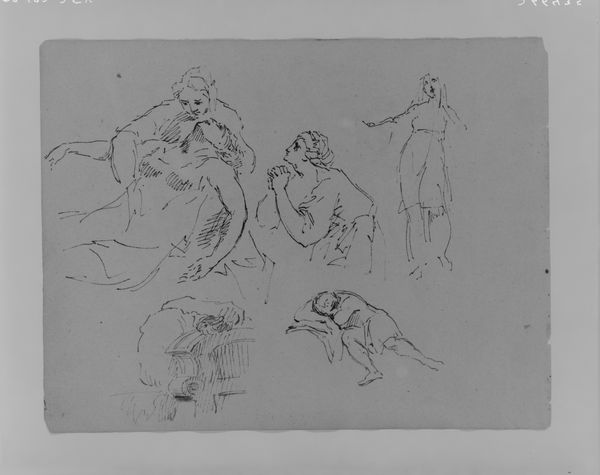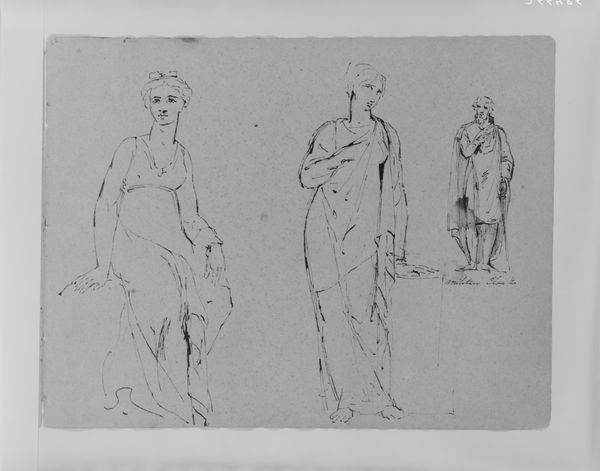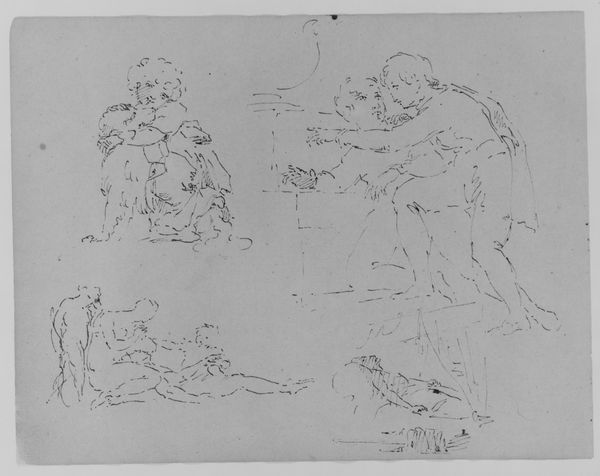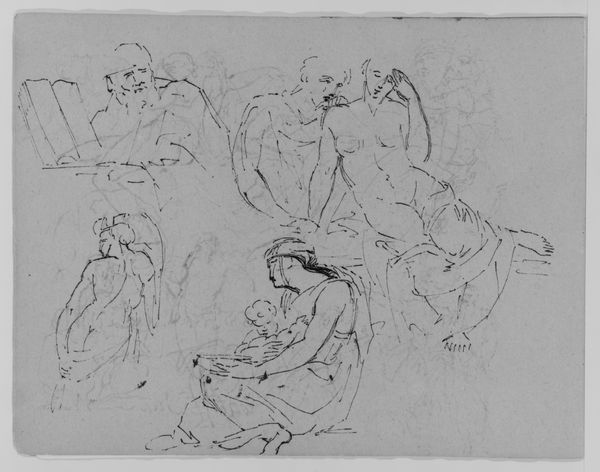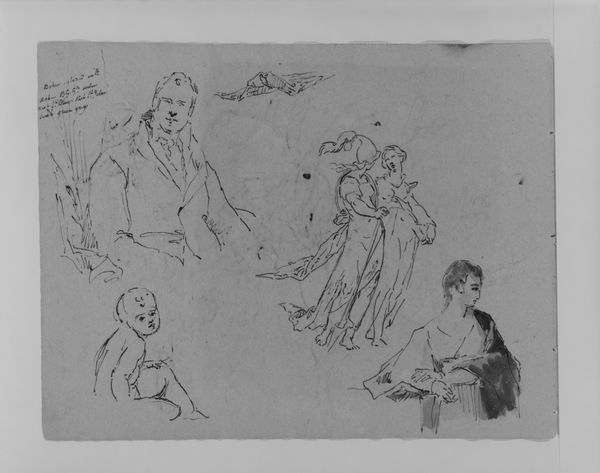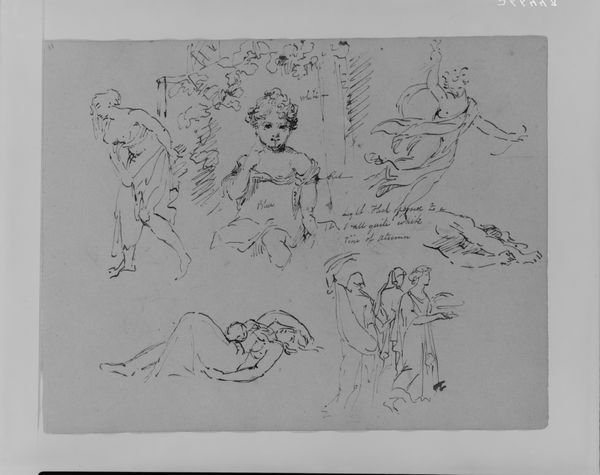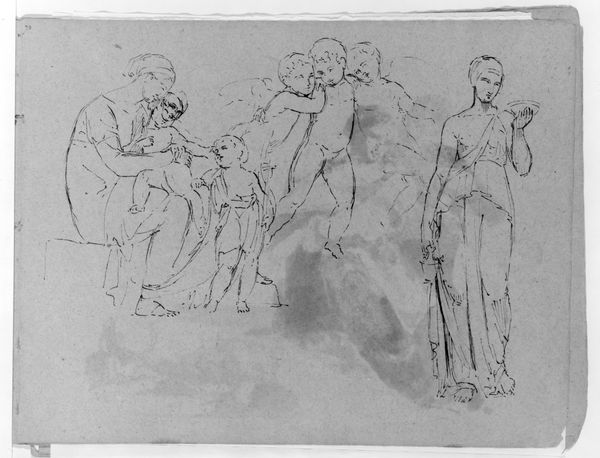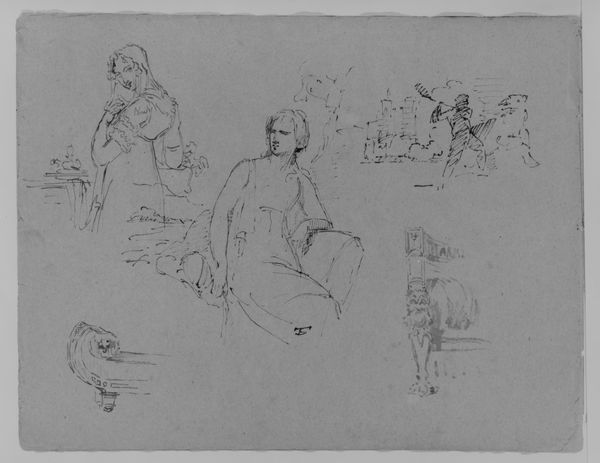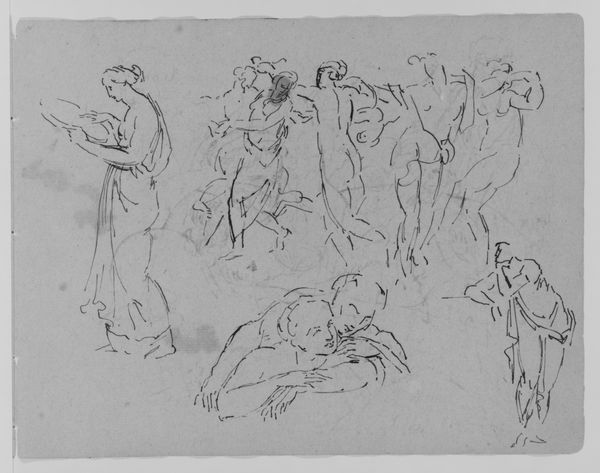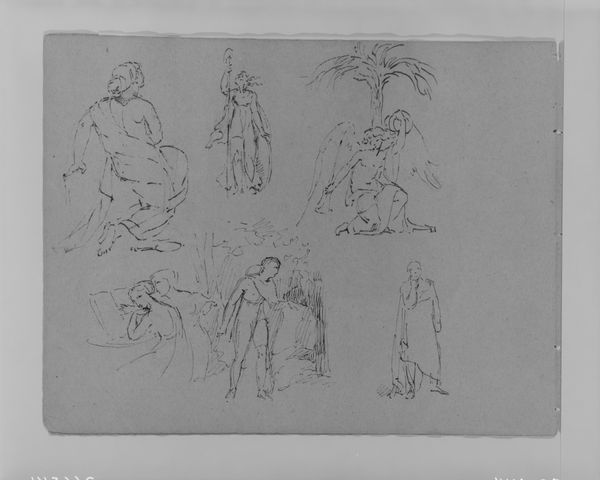
drawing, paper, ink
#
portrait
#
drawing
#
figuration
#
paper
#
ink
#
ink drawing experimentation
#
pen-ink sketch
#
men
#
sketchbook drawing
#
academic-art
Dimensions: 9 x 11 1/2 in. (22.9 x 29.2 cm)
Copyright: Public Domain
Editor: Here we have Thomas Sully's '(From Sketchbook),' created sometime between 1810 and 1820. It's an ink drawing on paper. What strikes me most is its rawness – a peek into the artist’s process. What can you tell me about how sketchbooks functioned in the early 19th century? Curator: Precisely. This wasn’t intended as a finished work, but as part of Sully’s artistic investigation. During this era, sketchbooks became increasingly important tools for artists, serving as portable studios where they could record observations, experiment with compositions, and develop ideas for larger, more formal pieces. Consider how this contrasts with the more public role paintings held in exhibitions and aristocratic collections. Editor: So, the sketchbook offered a private space for exploration before exhibiting or selling works publicly. Did artists usually show these sketches? Curator: Rarely. Their value lies in revealing the artist's thought process, unburdened by the expectations of the art market or the Salon. They offer invaluable insights into the artist’s training, sources, and development of ideas. Look closely: do you notice classical figures, reminiscent of ancient sculptures, perhaps suggesting his academic training and sources of inspiration? Editor: Yes, especially the central figure and the group at the top right – they feel very classical. I suppose it makes sense, given Sully’s aspiration to elevate American art by incorporating European academic training. Curator: Exactly. And consider how Sully’s drawings could be perceived within an American context striving for cultural legitimacy on the world stage. Were these sketches simply private exercises, or did they implicitly contribute to the formation of an American artistic identity rooted in European traditions? The interplay between privacy, artistic education, and cultural aspiration reveals a fascinating complexity. Editor: This makes me think about the tension between private study and public presentation. I'll definitely consider Sully’s position in early 19th-century American art differently now! Curator: Indeed, looking at something so intimate provides a rich framework to further discuss how art evolves in various political and cultural arenas.
Comments
No comments
Be the first to comment and join the conversation on the ultimate creative platform.
